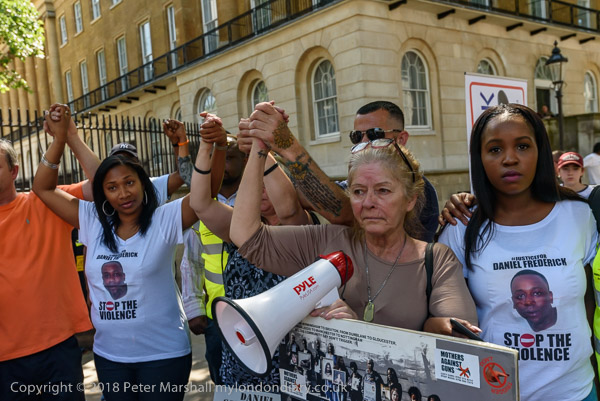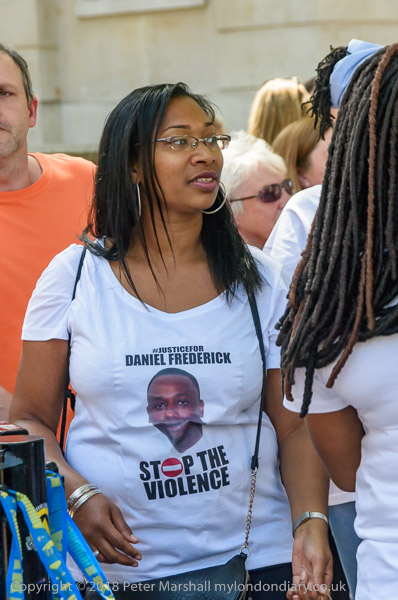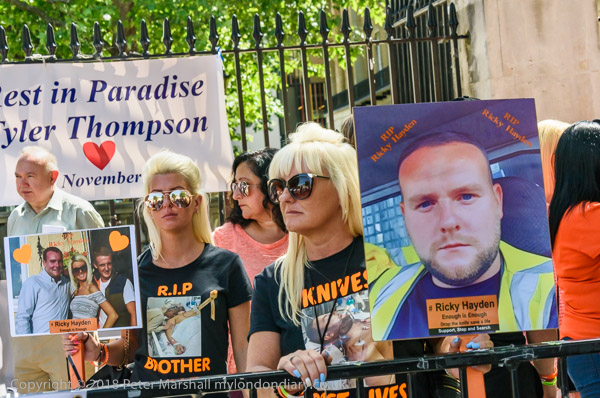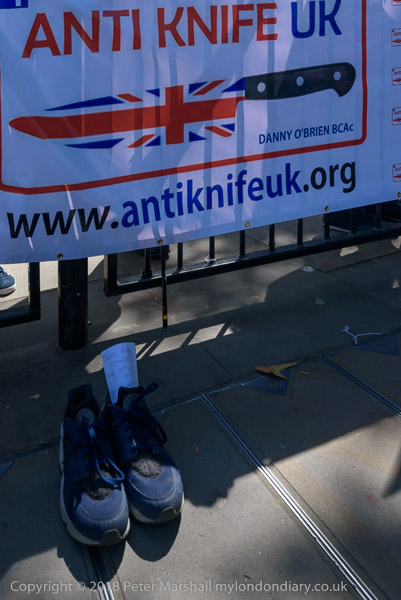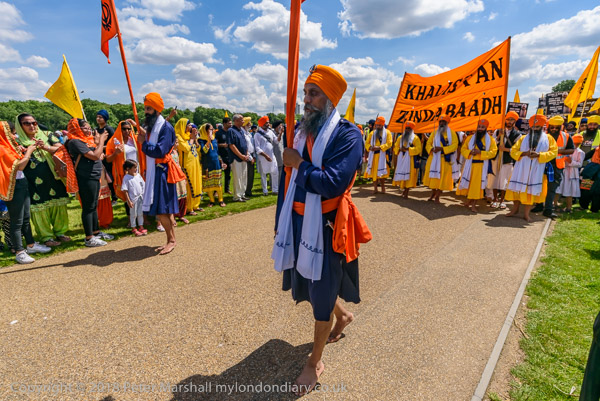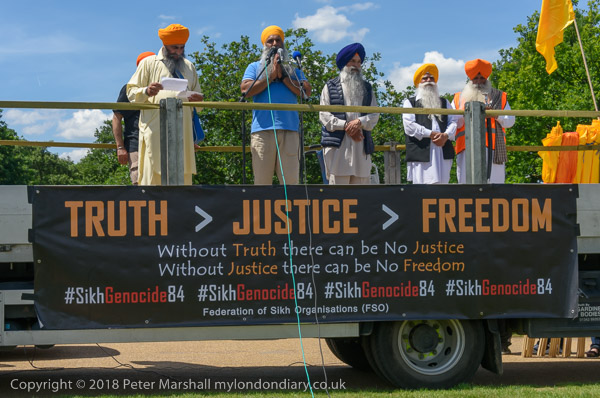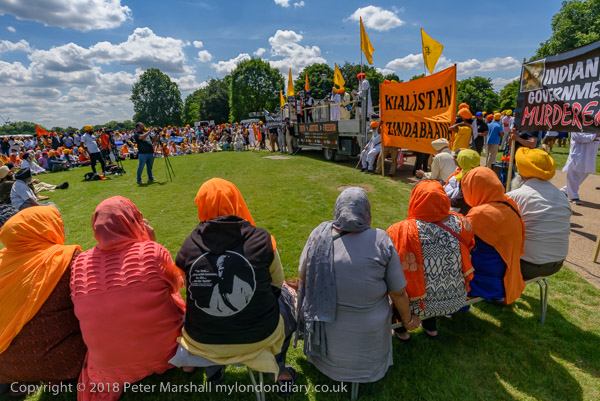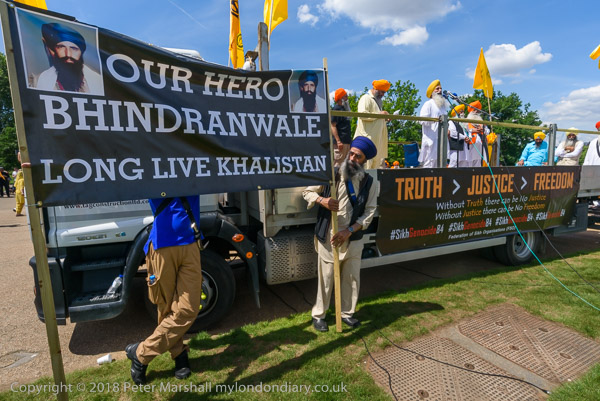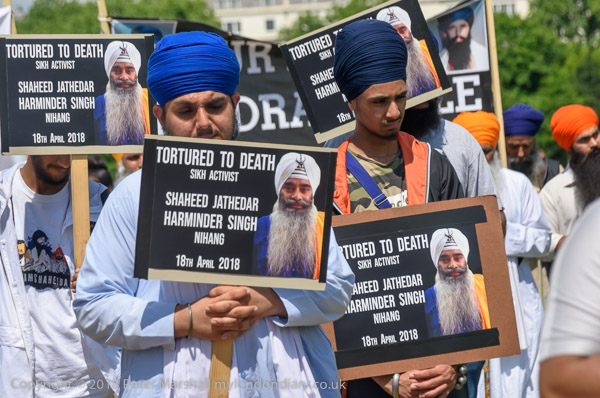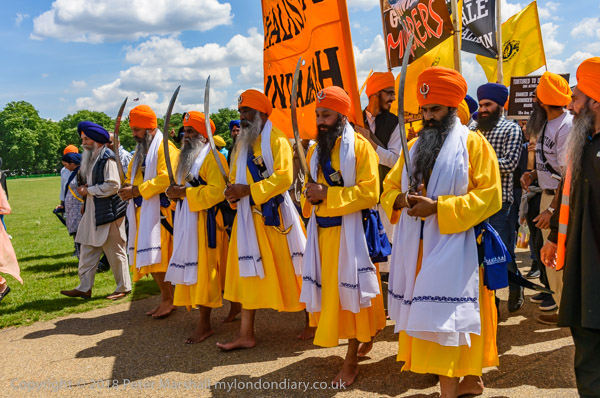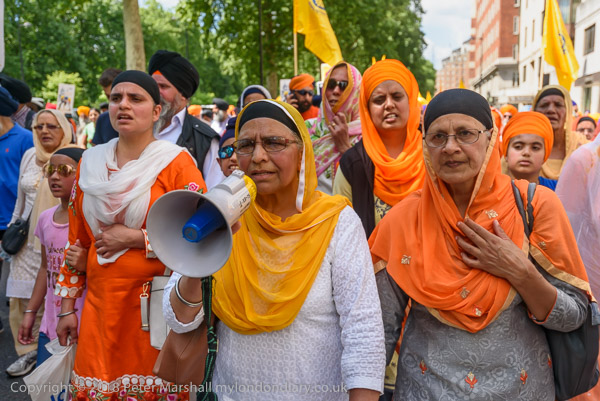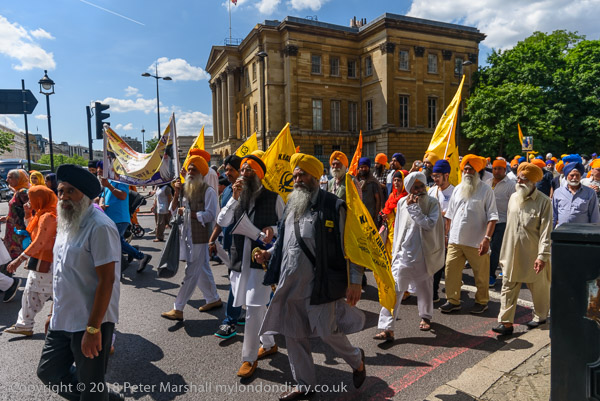Shakespeare and East Ham Vaisakhi – for me Sunday 22nd April 2007 was very much a day of two halves, with a morning spent at the Shakespeare’s Birthday celebrations around the Globe Theatre in Southwark and the afternoon with Sikhs celebrating in East Ham.
Shakespeare’s Birthday – Globe Theatre, Southwark
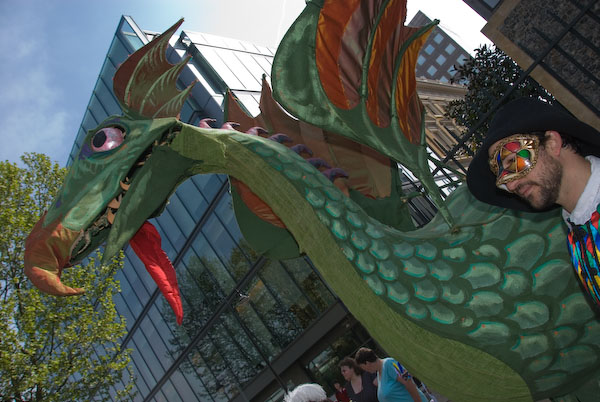
Shakespeare was born in April 1564, but the exact date is not known, though he was baptised on April 26th. Conventionally his birthday is celebrated on St George’s Day, April 23, so although this event was a day earlier it was just as likely to be his actual birthday.
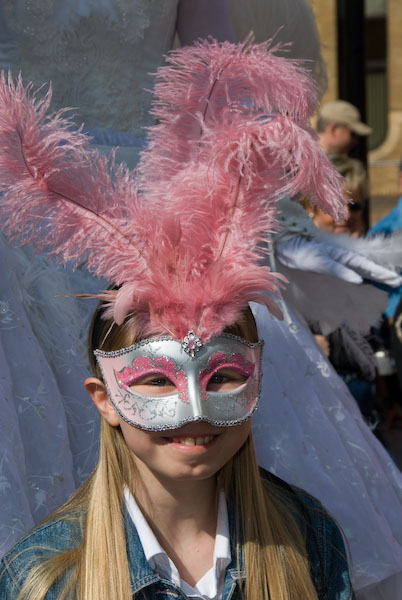
Unusually I didn’t write anything on the April 2007 page of My London Diary about either of the two events I photographed on this Sunday, other than the links to to pages of pictures, but there are some captions with the pictures that give the story of the day.
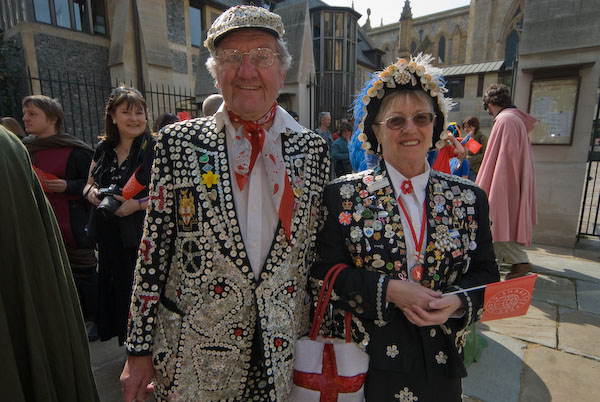
People met on Montague Close at the north entrance to Southwark Cathedral for the start of the carnival procession. Among them were the Pearly King of Bow Bells & Blackfriars and the Pearly Queen of the Old Kent Road, as well as a very splendid large dragon, who was accompanied by a man in a harlequin costume and mask of diamonds of blues, greens, yellows and reds.
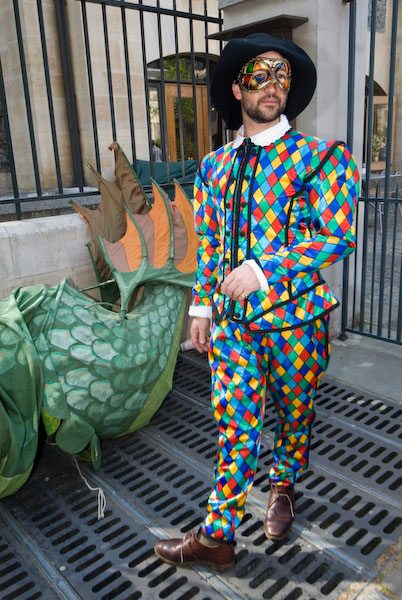
Fortunately for the dragon I think St George was saving his appearance for the following day, although later there was a man carrying his flag, and perhaps the man himself arrived after I had to rush away at noon.
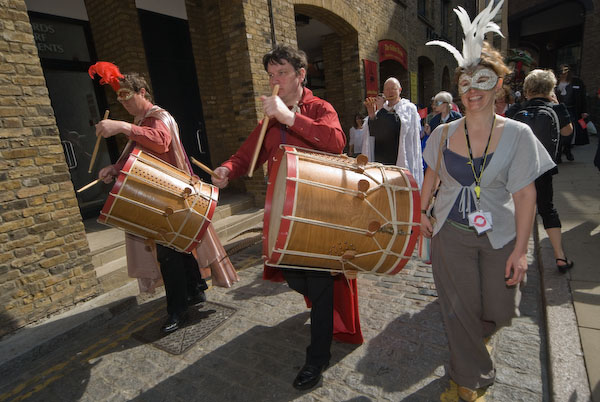
There were musicians with large drums and small whistles and others in some kind of medieval dress as well as a large posse of masked children as we made our way west past Pickfords Wharf and along Clink Street to the riverside and Bankside in front of the replica Globe theatre were we were welcomed by Artistic Director Dominic Dromgoole, who invited us all – including the dragon – into the theatre.
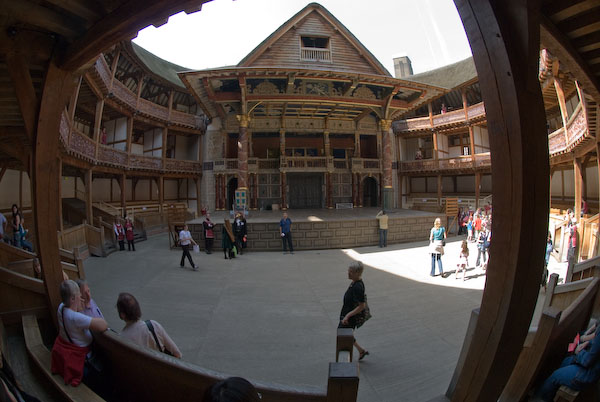
Given the Globe is a wooden structure which would burn rather well this was perhaps foolhardy, but the dragon did seem rather short of fiery breath and on his or her best behaviour and posed for photographs rather tamely and demurely on the stage with the children and others. No children were eaten or maidens ravaged at least while I was there.
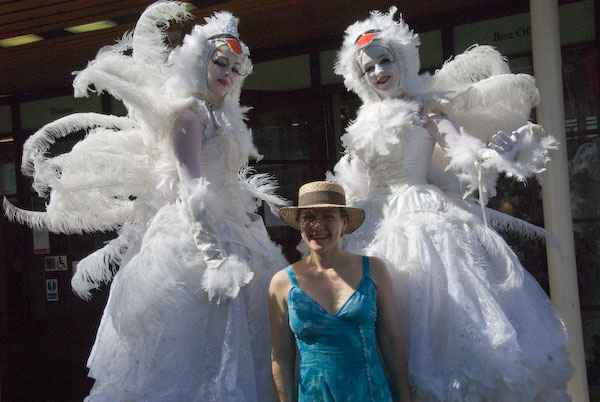
I was sorry to leave, but there’s a time for all things, and my time on Bankside ran out fast, and the journey to the Gurdwara in East Ham from London Bridge to West Ham and then East Ham and the walk to Rosebery Avenue took me around an hour.
More pictures on My London Diary.
Vaisakhi – East Ham – Gurdwara Dasmesh Darbar
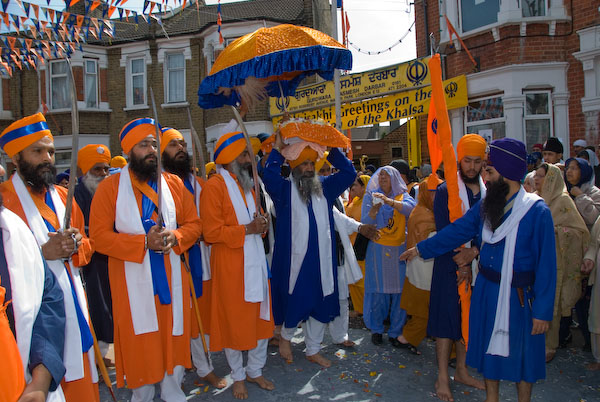
The street was densely crowded as I got close to the Gurdwara, but people were very welcoming and let me through, though I stopped to take a few pictures of them.
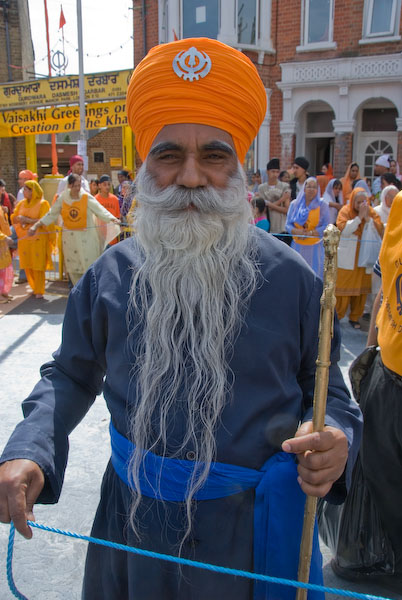
As I arrived the organisers were giving people at the front of the crowd handfuls of flower petals which were thrown as the Guru Granth Sahib – the sacred Sikh scriptures and eternal Guru – was carried on cushions on its bearers head, sheltered by a saffron and blue umbrella, to be placed on a float.
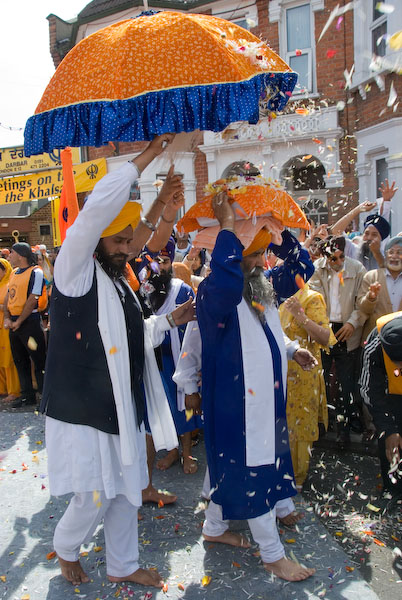
The came the Khalsa, carrying Sikh standards and with the five in saffron robes holding their swords.
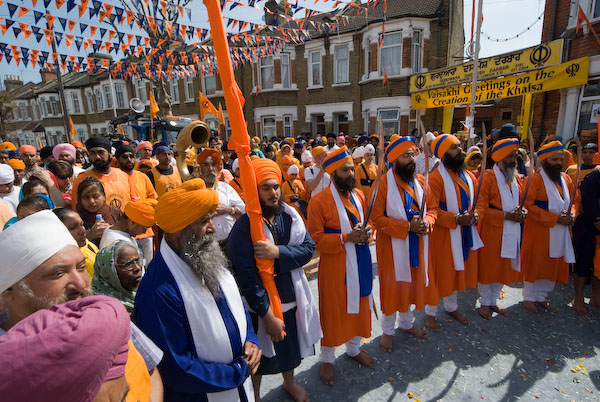
There were prayers and the five had flower garlands placed around their necks and loud blasts from a splendid curved metal horn, a Narsinga announced the start of the procession, with the congregation joining behind the float carrying the Guru Granth Sahib.
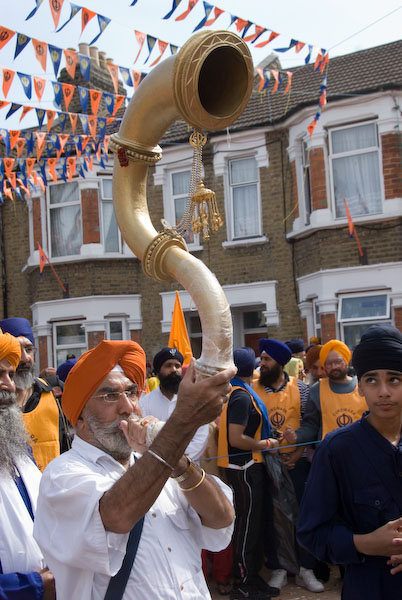
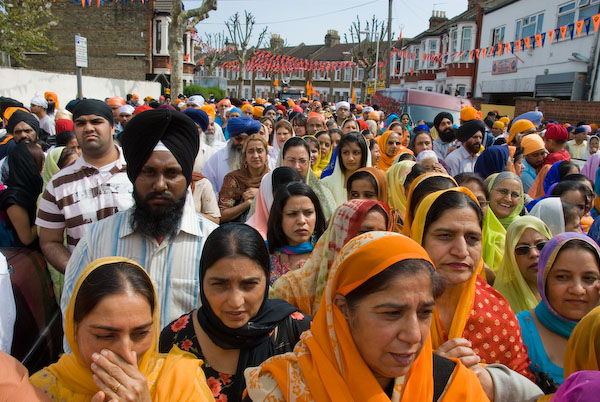
The Khalsa walk barefoot with holding their swords upright and looking ahead rather than at the ground and a team of sweepers, also barefoot, sweep the roadway in front of them.
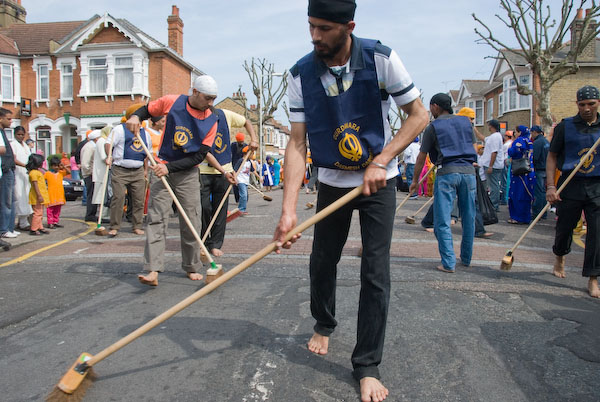
The procession moved onto the main road, High Street North, which was soon packed as far as I could see in both directions. I waited for the end of the procession to pass but did not follow it on the long procession around the area which takes several hours.
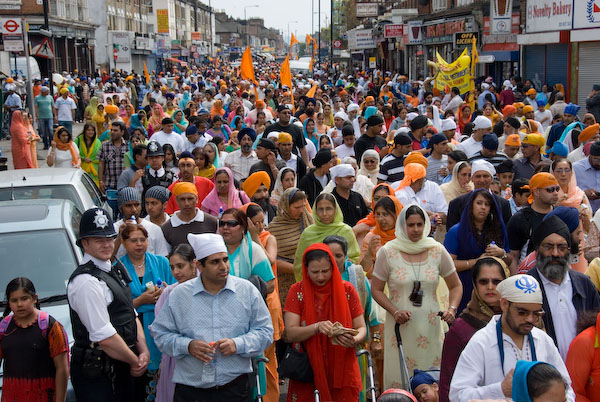
There are many more pictures on My London Diary
Flickr – Facebook – My London Diary – Hull Photos – Lea Valley – Paris
London’s Industrial Heritage – London Photos
All photographs on this page are copyright © Peter Marshall.
Contact me to buy prints or licence to reproduce.
